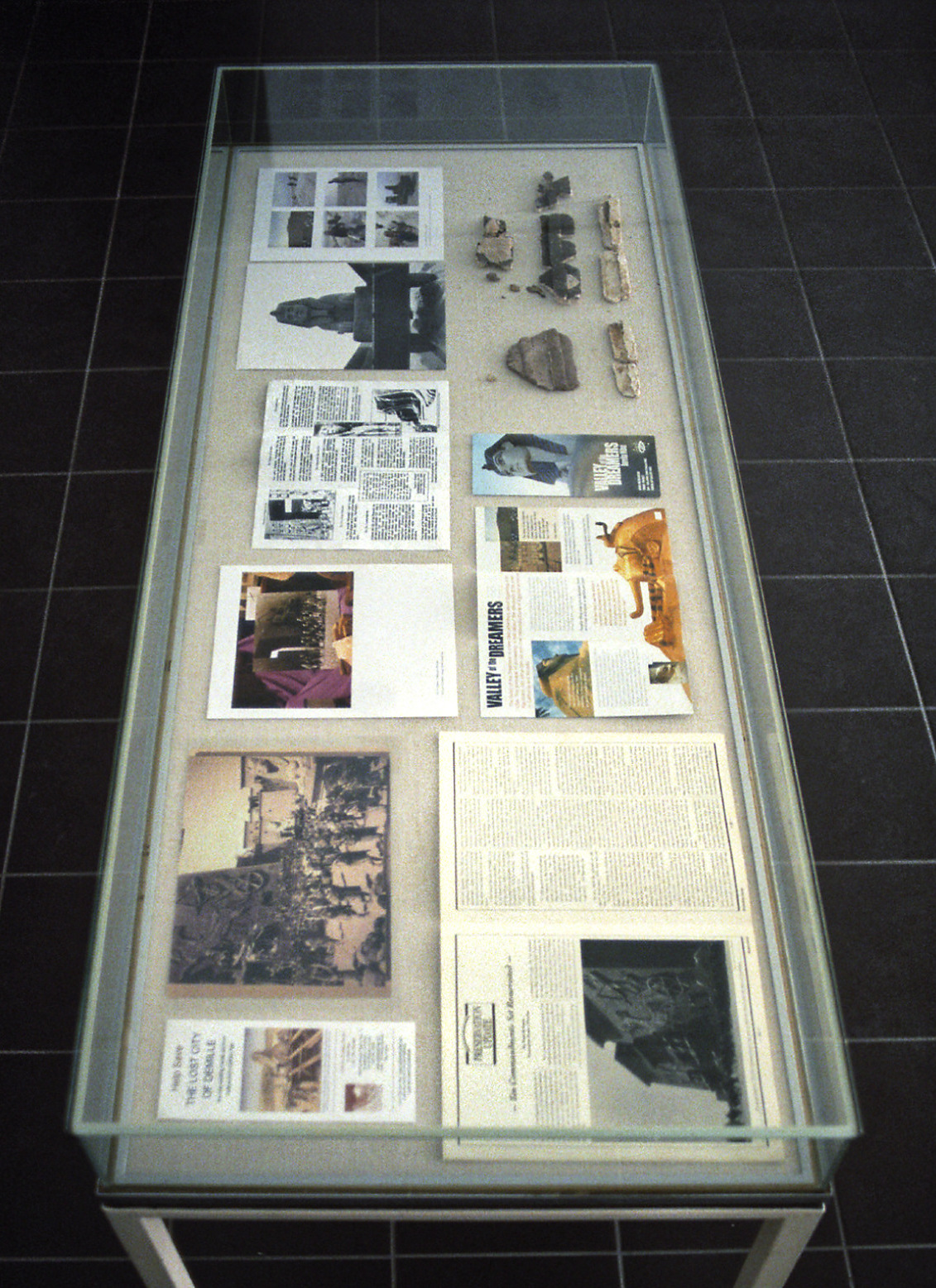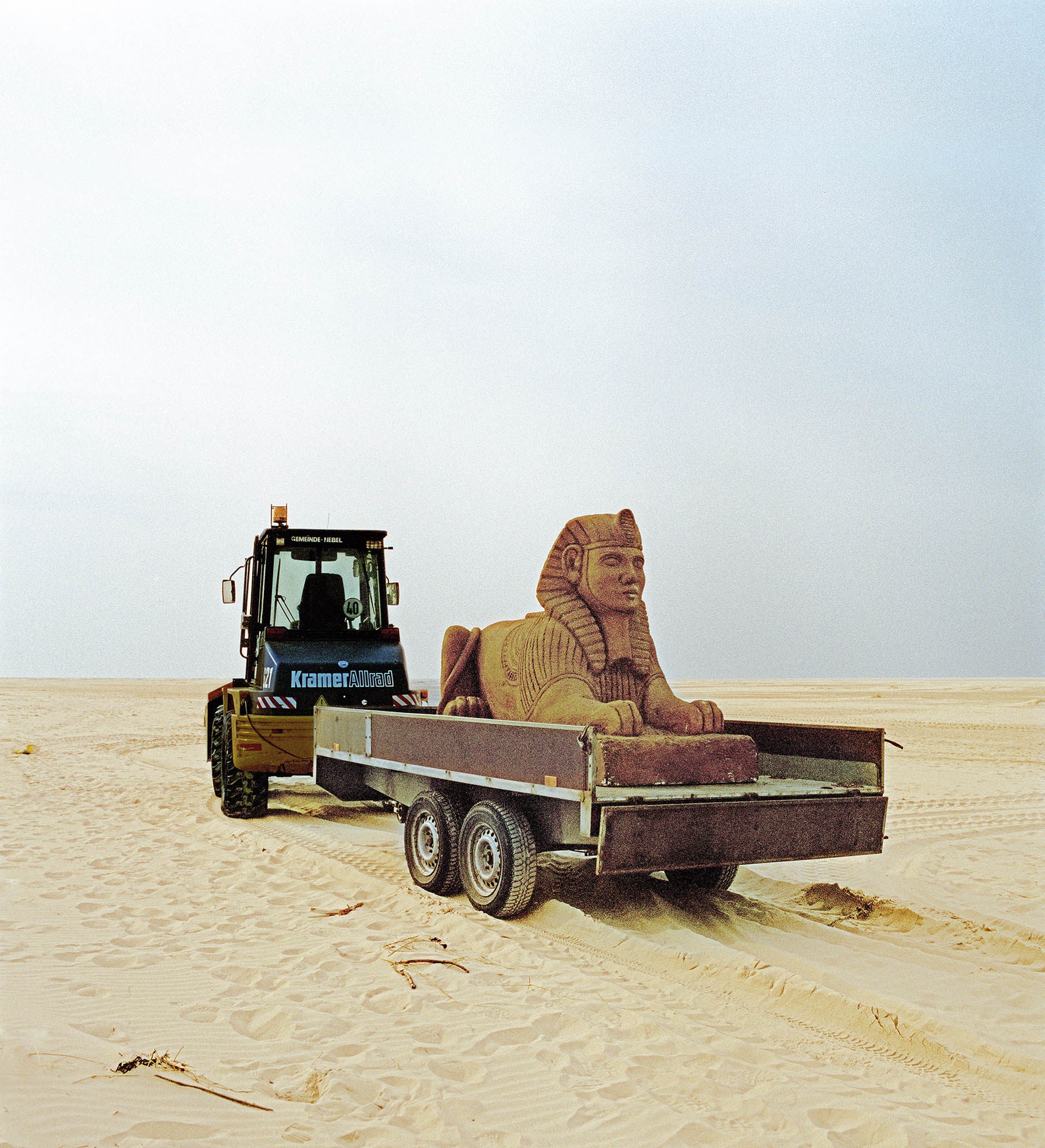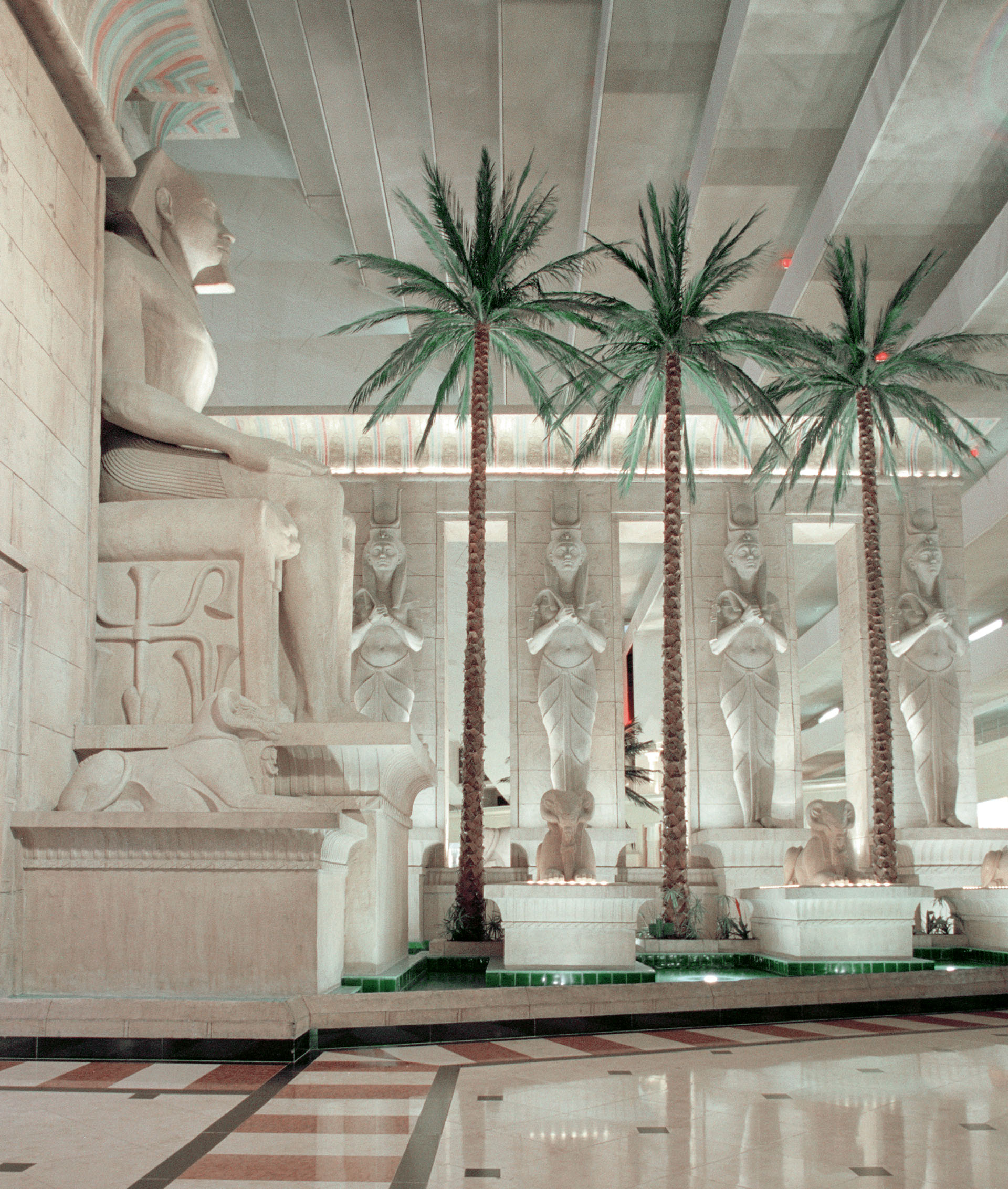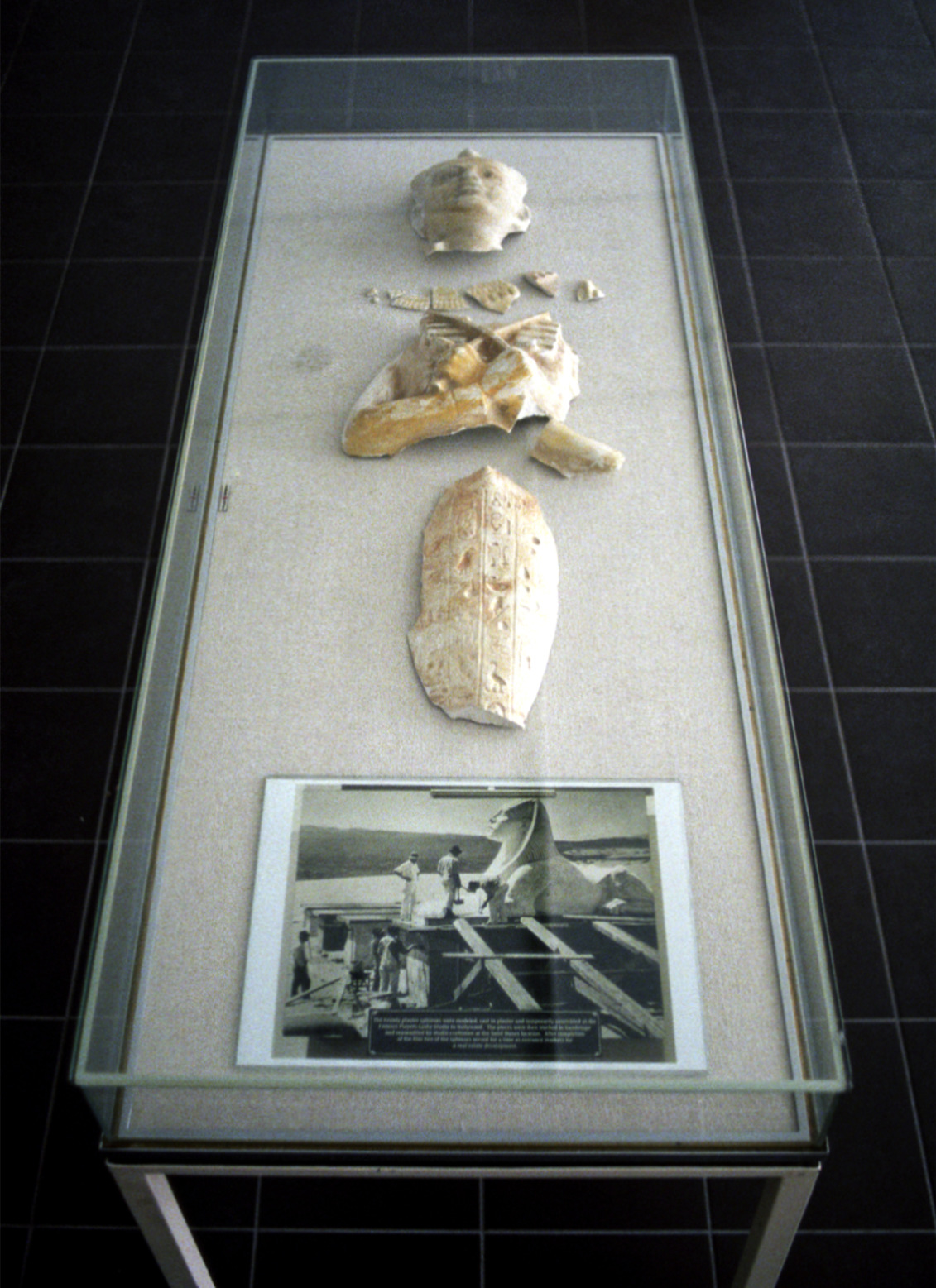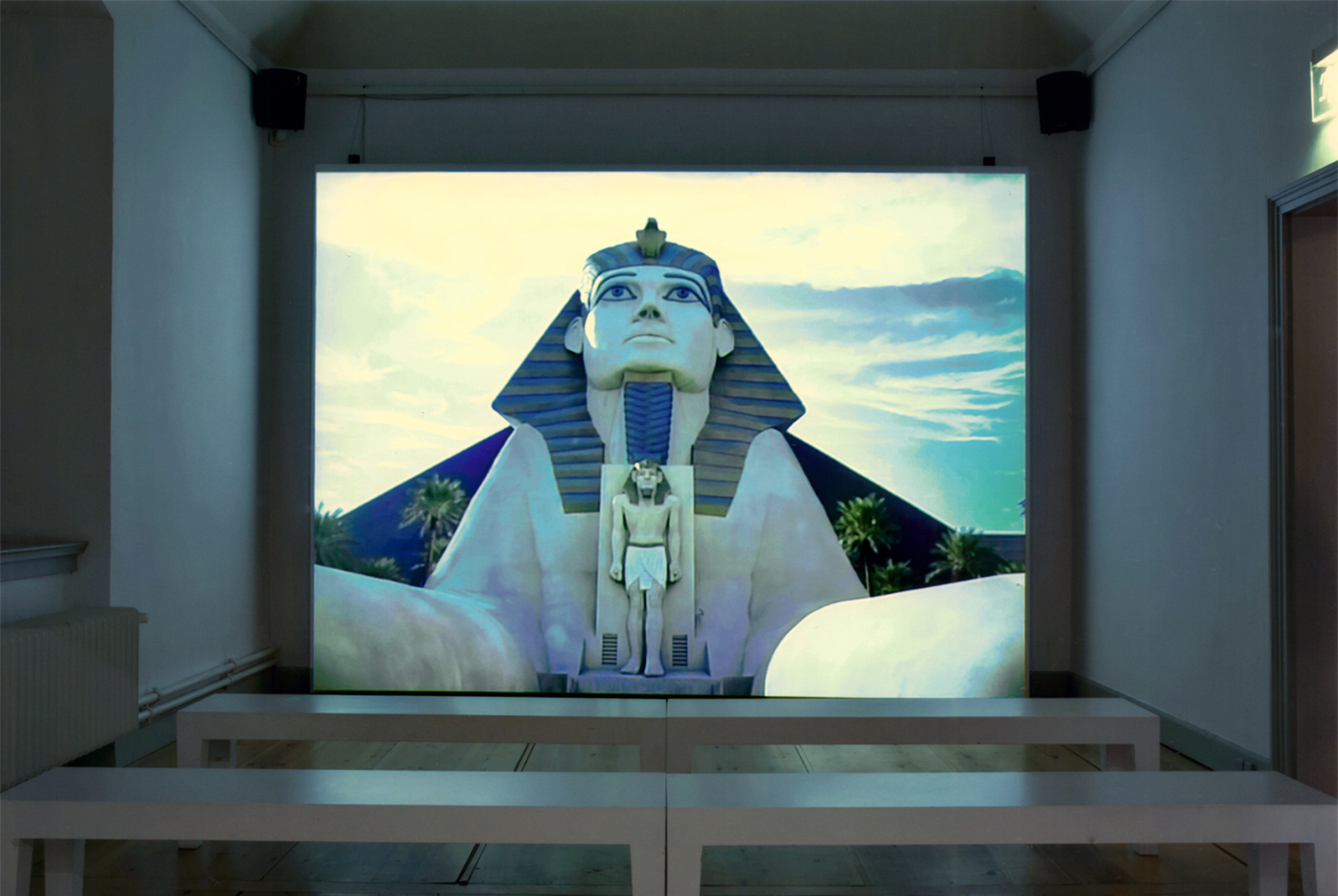
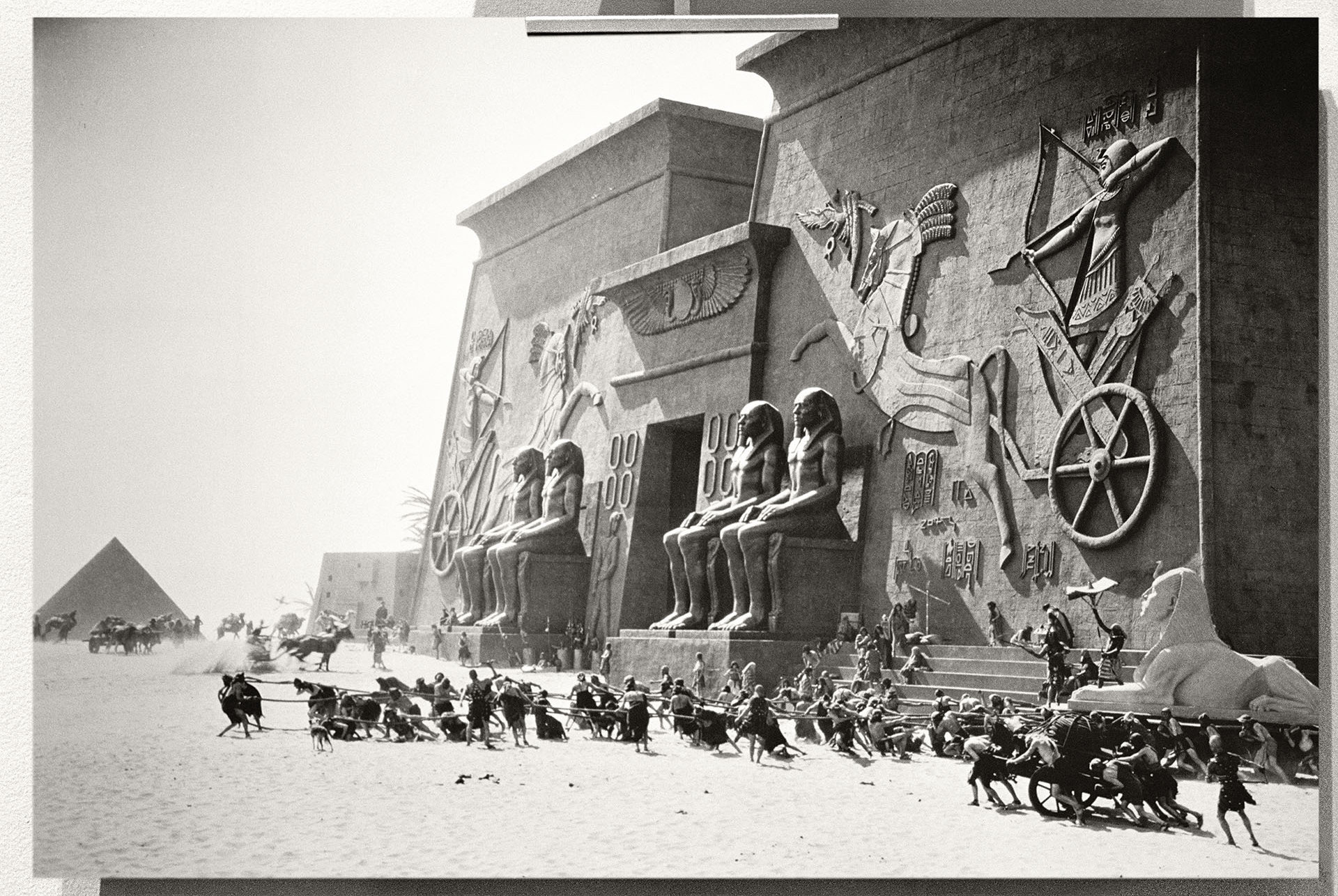
Tal der Träumer / Valley of the Dreamers
Film, 2004, MiniDV / BetaSP, 37 min. 18 sec., 4:3 / Language: English / English with German voice-over.
Installation and video projection, 16 photographs, glass vitrines containing objects and archaelogical finds.
In Valley of the Dreamers (2004), Aurelia Mihai presents us with archaeology, and this, too, has to do with access to history with all of the ambivalences of truth and illusion. It tells the story of archaeological digs in California and Nevada in search of Egyptian relics; not Egyptian originals, however, which naturally cannot be found in the deserts of the western United States, but relics from the film sets of The Ten Commandments by Cecil B. DeMille of 1923, which were blown up after the movie was completed and buried in the desert sand. DeMille shot a remake in 1956 that is still considered one of the greatest monumental Hollywood films of all time. In this case, access to his- tory is at the same time access to the history of Hollywood, thus to cinematic history and the history of illusions. Mihai dresses this examination of history and its illusion in the format of a documentary and in doing so engages in a confusing game of history, illusion, fiction, and art that is difficult to unravel.
DeMille's Legacy
by IRIS DRESSLER
The video and installation “Valley of the Dreamers” comprises a film screening and a documentation room, set up in the style of a scientific presentation. It uses the memorable find of the set of “The Ten Commandments” as an opportunity to explore the anachronisms, displacements and paradoxes within the ever-shrinking temporal perspective of “cultural heritage”. The time periods after which something is considered worth keeping are getting distinctly shorter. This may have to do with the fact that our culture mainly produces things which are not designed to last. Compared with the discovery of the virtually intact three thousand year old burial chamber of Tutankhamen in 1922 by Howard Carter and his team, what is left of the plaster and concrete set of DeMille’s “The Ten Commandments”, after not even a century, is nothing more than a weather-beaten pile of debris.
“Valley of the Dreamers” is a documentary fiction about Egyptologists in the USA. Aurelia Mihai spotlights the diversity of historicizing illusionist architecture which has all but seamlessly extended the filmic space into the urban space and through which in both Hollywood and Las Vegas the USA have transformed their own clichés into monuments. Here the authentic has always been the imitation, the monumentalised “fake”. Thus the Luxor Casino, opened in Las Vegas in 1993, is a glass pyramid together with a stylised copy of the Sphinx of Giza, which is even larger than the original. It houses among other things an exact reconstruction of the burial chamber of “King Tut”, a one-to-one replica of the Temple of Ramses II, an artificial Nile as well as plants and birds of the Egyptian flora and fauna.(...)
Made up of her own and found footage and filmed at various locations, Aurelia Mihai’s authentic-fictional documentary film about the film sets buried in the sands of the Californian desert exploits just these montage techniques. To this end, re-enacted archaeological excavations with actors, but also with real archaeologists, were filmed both in the dunes of Santa Barbara and on the German Island of Amrum. A central character in the video, besides the off-screen narrator, is Christopher Horak, curator of the Hollywood Entertainment Museum, who speaks in front of the set of a low-relief which could be salvaged from DeMille’s second filming of “The Ten Commandments” (1956). This second film, produced in colour and with sound, was actually filmed in part in Egypt, however no monumental plaster sets had to be built there as these were substituted with miniatures. Horak ascribes the set design of the first version of “The Ten Commandments” to the media hype surrounding the discovery of the tomb of Tutankhamen in 1922. According to him this hype set off a wave of Egyptology both worldwide and cross-culturally, which the Hollywood industry then knew how to turn into profit: and in so doing closed the “closed-circuit” between the Media channels. Not only were numerous biblical films made in Egyptian style at the beginning of the 1920s. Movie palaces such as the “Egyptian Theatre” designed by Sid Grauman and opened in 1923, were also built in this style. In the heyday of the “Egyptian Theatre”, which was restored a few years ago and now houses the American Cinematheque, actors dressed as Egyptian body-guards walked on the roof announcing the start of the movie screening. It goes without saying that the premiere of the “The Ten Commandments” was screened here, along with the performance of real mimes on the cinema’s generously-sized stage. Horak’s exposition is accompanied among other things by a tracking shot through the tomb of the famous Pharaoh. But it is in fact the replica in Las Vegas: It is “King Tut’s Tomb & Museum”. Mihai assembles and cross-fades her diverse material perfectly: whether it is footage of the recovery of the burial chamber of Tutankhamen, a BBC documentation of the discovery of DeMille’s ruins or her re-enacted excavation scenes, whether it is the images from the set or excerpts from both versions of “The Ten Commandments”. In the same style as the typical tautological argumentation implemented in documentary films a corresponding photograph of the set is mounted in the film passages from “The Ten Commandments”. sCurrent images of allegedly authentic locations blend perfectly with the historical film material. Footage which Mihai filmed in Las Vegas and Hollywood, but also during the rehearsals for the premiere of the musical Aida in Hamburg constantly allude to the correspondence between the film industry’s illusionist architecture, the stage and urban development. Mihai demonstrates their mechanisms and the effects of the dislocation of reality and fiction, historic and spatial order, original and plagiarism. In doing so she switches continuously between the documentary, narrative and illusionistic forms of storytelling used in film. Mihai is however not interested in a simple duplication of the perfect “fake”, as she repeatedly exposes her own constructions between “truth” and “lies”.“Valley of the Dreamers” not only questions the structures of the documentary educational film, but also imitates the staging repertoire of pseudo-scientific presentations of cultural history, which are implemented as a standard concept in most museums today. The video “Valley of the Dreamers” also deals with the paradoxes in a society in which nature and culture are collected and displayed in museums in an almost obsessive manner, whereby categories such as authenticity, originality, historicity, location, duration or identity are permanently defined anew. Isn’t the exact replication of St. Mark’s Square in Venice or the burial chamber of Tutankhamen in itself a form of preservation and the mediation of cultural values – as in the case of the countless plaster casts of classical sculptures left to us by the 19th Century? Are the replicas of the Luxor Casino or the DeMille’s film sets not already in themselves authentic testaments of a cultural practice which is worth preserving?
At the end of Brosnan’s article about DeMille’s sunken city he writes “... we won’t give up until it’s [the city] where it belongs: in a museum where our grandchildren and their grandchildren can marvel at this magnificent piece of their heritage …”. Mihai’s documentation too ends – mimicking the style of television documentaries about threatened species or national parks – with the emphatic warning to dedicate yourself to the preservation of DeMille’s film sets before it is too late: for they have not yet been saved.
